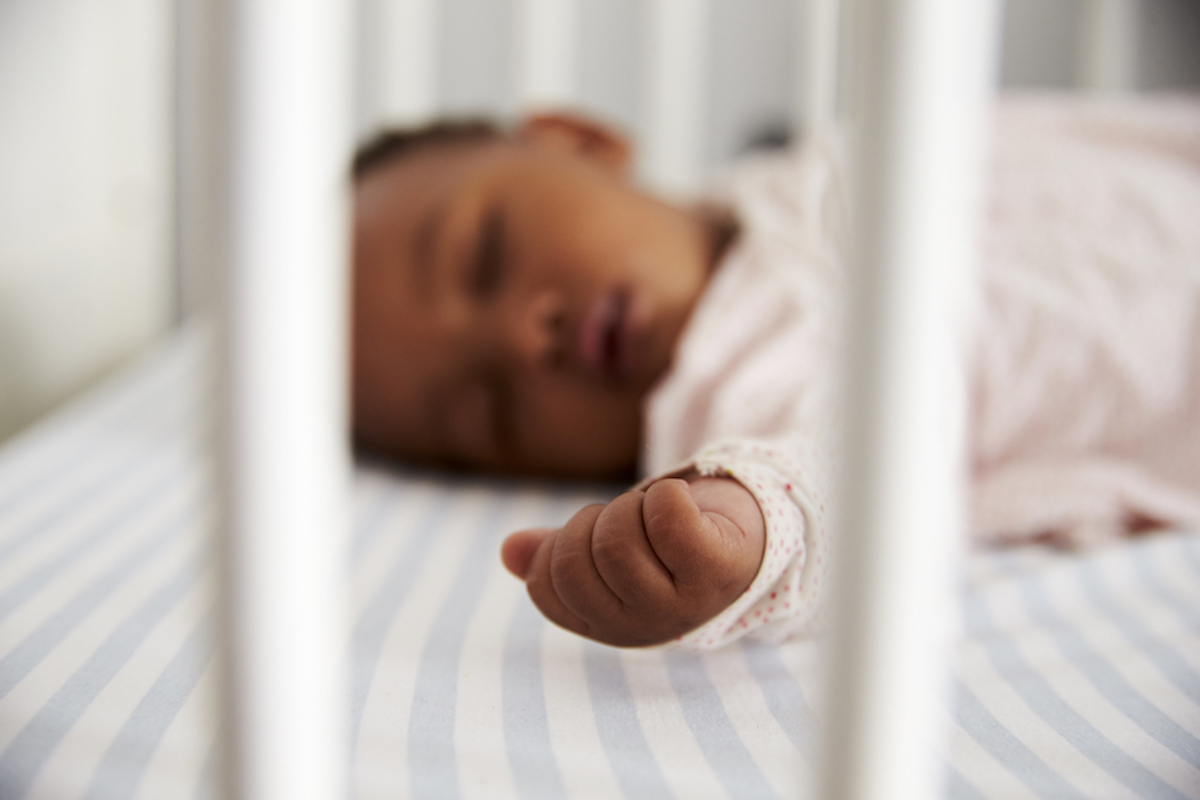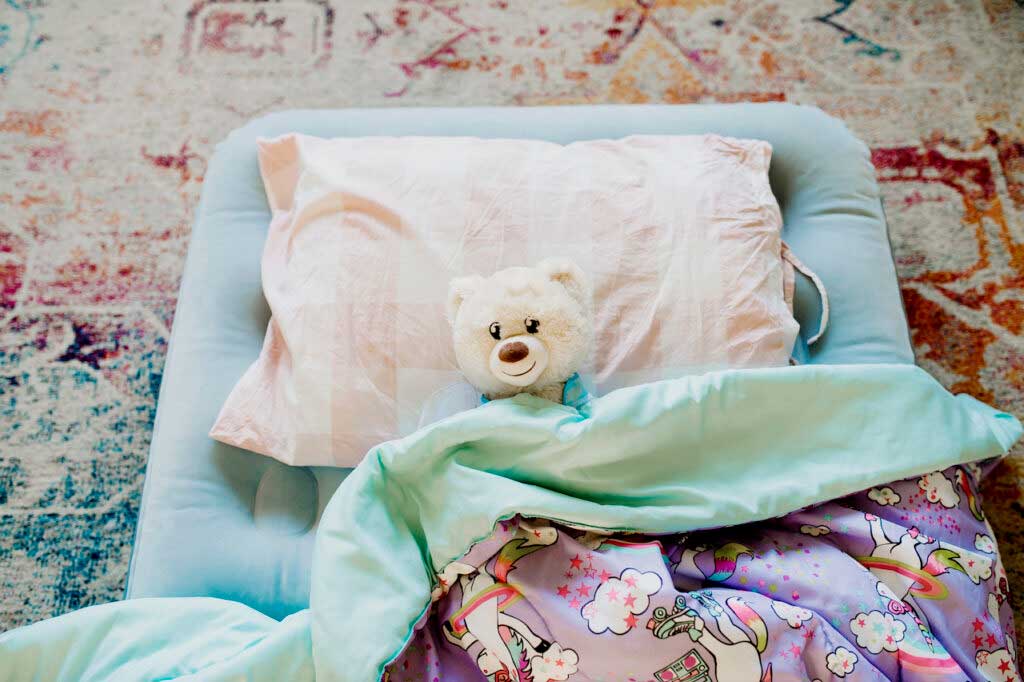It’s 10:30 p.m. You’ve just fallen asleep, and you’re awoken by a piercing, frightened scream from your 5-year-old’s room. When you rush in, you find them sitting up in their bed, crying hysterically. “No!” “Mommy!” “Go away!” they whimper between screams.
When you go to their bed and comfort them, they push you away. You ask what is wrong, but they do not answer. They repeat the same words, or just cry and scream. They’re completely and utterly inconsolable. There seems to be nothing you can do — as you tell them “Mom’s here! I’m here!” they seem not to see you.
Seven agonizing minutes later, they lie back down and go to sleep as if nothing has happened.
You sleep all night with the door open, straining for more sounds. Nothing. The next morning, they have no memory of it. When you casually ask if they had any dreams, they tell you about their dream of a unicorn puppy that took a bath in the toilet, and laugh so hard they choke on their Rice Krispies.
WHAT THE HECK HAPPENED?
It’s a night terror, sometimes called a sleep terror. And it’s … terrifying. For you. If you’d like a visual, here’s a four-minute YouTube video documentation.
Give me the details
Parasomnia is the general term for episodic sleep disruptions. These include sleepwalking, sleep talking, urination during sleep, teeth grinding, “confusional arousals,” and night terrors. Sleep disruptions can occur during either non-REM sleep, typically in the early part of the night, or REM sleep, in the later part of the night. Night terrors occur during non-REM sleep, typically the first third of the night.
These disruptions occur throughout childhood. For toddlers, they often take the form of a confusional arousal — something that can look like what I described above but may also be lower-amplitude (more whimpering or moaning, less crying). For children of early school age, this would more commonly be a night terror — the child waking abruptly with a piercing scream, being extremely agitated, possibly seeming like they are trying to escape something.
In both cases, the episode tends to end with the child falling back asleep, without ever seeming conscious of what is going on. They usually do not remember in the morning.
Is this a nightmare?
No. A nightmare is characteristic of REM sleep, typically in the later portion of the night. If your child has a nightmare, you’ll find out when they wake up. When you go in to them, they will be awake and scared, able to be comforted, and recognize you are there. Often they’ll remember the dream in the morning, at least to some extent.
Part of what is so terrifying about night terrors (at least I have found) is precisely the fact that you cannot comfort your child.
This isn’t a perfect distinction, but if you’re wondering “Is this a nightmare or a night terror?” the timing in the night is very helpful. In the first hours, it’s much more likely to be a night terror; in the later hours, a nightmare.
How common are these?
Quite common.
Precisely how many kids have these experiences is a hard question to answer, in part because it relies on parental recall and in part because it’s sometimes hard to even know that an event occurred. With a younger child, a confusional arousal could be fairly quiet and might occur without a parent noticing.
One study in Canada followed a group of 2,000 children from the age of 2.5 to 6, and found that over this period almost 40% of the children had at least one confusional arousal episode recorded. They were more common in the younger ages.
The prevalence of night terrors is probably lower in older children — this review puts it at 1% to 6.5%, though notes that there are populations (more below) with estimates as high as 14%.
An important note is that many children have one or two of these episodes in their lifetime and do not have them again. Some kids will have them repeatedly, but having one isn’t necessarily an indicator of more to come.
Are there particular risk factors?
These events have a strong genetic component. If you had sleep terrors as a child, there is a much higher chance your child will. There’s a high correlation across twins — higher for identical than fraternal twins. This all points to the importance of family history, although we do not have much detail on any particular genes that are influential.
Sleep terrors are also influenced by sleep deprivation. Consistently poor or not enough sleep can be an underlying risk factor. Beyond this, sleep is important for kids, and there are a lot of reasons to make sure your child is getting enough sleep (I wrote a bit about that in this op-ed leading into The Family Firm).
There are a few other risk factors: illness (including fever), caffeine consumption (by your child), medication that interferes with sleep. To the extent that these can be avoided, they should be (your child probably does not need to drink caffeine-containing beverages, for example).
Having said this, with a condition so common, in many cases it happens with no particular recognizable risk factors.
Is there anything I can do?
During the sleep terror: no. In fact, especially with older children, trying to intervene to calm them down can make it considerably worse.
This is extremely difficult to implement as a parent. It’s nearly impossible the first time it happens, since it’s hard to know what is going on and your parental instincts are absolutely to try to help. Even when you expect it, the idea of just standing back while your child screams hysterically is hugely challenging. As one review article states: “Parental education and support cannot be over-emphasized.”
In most cases, even when sleep terrors recur frequently, there isn’t a need for any treatment. The appropriate treatment is more or less to do nothing, and children will generally outgrow them by puberty.
The exception is if the sleep terrors are interfering with sleep overall and the child is showing signs of fatigue or drowsiness during the day. If that’s true, there are some medications that can be used in the short term, or you may be advised to wake the child 30 minutes before the sleep terrors typically occur. Having said that: these are not typical recommendations and definitely would warrant long pediatrician discussion first.
Are there long-term consequences?
To individual night terrors, no.
It is worth noting, though, that children who have these frequently are predisposed to other behavioral sleep issues, like sleepwalking. These later sleep disorders are rarer, so the vast majority of children with issues in childhood will not have any issues later, but the risk is elevated.
Should I talk to my pediatrician?
In most cases, this doesn’t need medical attention, and what you’re likely to get from your pediatrician is reassurance.
However: you should always talk to your pediatrician if you’re worried. At the risk of angering already overworked pediatricians, I think this is a general point, not just about night terrors. If something happens with your kid that seems not right or scares you, call them.
Community Guidelines















